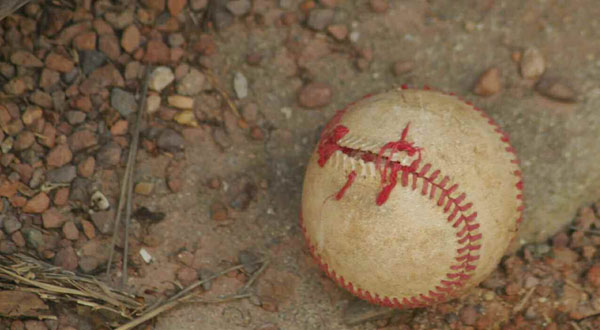 We freshmen on the Pomona-Pitzer baseball team have a new position to add to our baseball cards: designated foul ball retriever. Every year, the new guys assume the job, as a collective unit, of making sure every single ball that leaves Alumni Field gets back safely into the umpire’s pocket.
We freshmen on the Pomona-Pitzer baseball team have a new position to add to our baseball cards: designated foul ball retriever. Every year, the new guys assume the job, as a collective unit, of making sure every single ball that leaves Alumni Field gets back safely into the umpire’s pocket.
Our task sounds simple until you consider all the distances and directions a foul ball can travel off of a bat. This game-within-a-game comes down to location, location, location. Foul balls out of play down the third base side are a freshman’s best friend, as they usually land on the football field. There have been games where I’ve spent more time there than on the baseball field. Luckily, the white of the ball against the level green grass makes for a quick and easy retrieval.
Fouls straight back behind the backstop sometimes find the few problematic clumps of bushes, but even in this unlucky scenario, there are usually plenty of fans who saw the ball land and can point you in the right direction. The first base side is where things can get ugly. The bushes are sharp, thick and an excellent hiding spot for naughty baseballs. See you in three innings.
Most of the time, though, foul balls are returned to the umpire in an impressively timely manner. Our mastery of the “foul ball science of deduction” allows us to retrace the flight of the ball and consider the spin to help us locate fouls that present a worthy challenge. And then organization and communication make the big difference.
There are nine freshmen on the team, but the number of people retrieving foul balls at any given moment can fall anywhere from two to seven, as some of us are playing in the game or assigned to other jobs. For those of us available, we have created a line-up based on jersey number. So the freshman with the lowest number leads off with the first foul, while whoever has the next lowest number waits on deck.
A turn is not over until we tell the person after us that it’s now theirs. Because foul balls can pile up in a hurry, it is important that everyone knows where they fall in the order as well as who is and isn’t participating at any given moment.
Sometimes, two foul balls are hit in the same general area, but only one is clearly visible. You should never commit the evil act of stealing your friend’s more findable foul ball before he gets to it and making him dig around for ages to find yours.
As soon as the ball leaves the bat and heads for foul territory, you should be outside of the dugout and headed towards the stairs at a jog. Not only does any delay give the impression that you aren’t on top of your responsibilities, it gives the ball even more time to roll into nearly undetectable hiding spots.\
Hearing the crowd erupt as you’re digging around for a ball is a very lonely feeling. Foul balls in the ninth inning are especially bad because there is a fear of missing the final out. Everyone wants to be in the dugout to cheer on the team during the final out of a win or to help try to spur a comeback if we are trailing. In the end, it’s all about being a good teammate.
Each player on the team has responsibilities and jobs that lend to our success. Even the best players to don a Pomona-Pitzer uniform spent their freshman year chasing fouls around the field en route to playing professionally. Truthfully, I’m happy to go hunt down other people’s foul balls because I know that when I hit mine, there’ll be someone else going after them.
